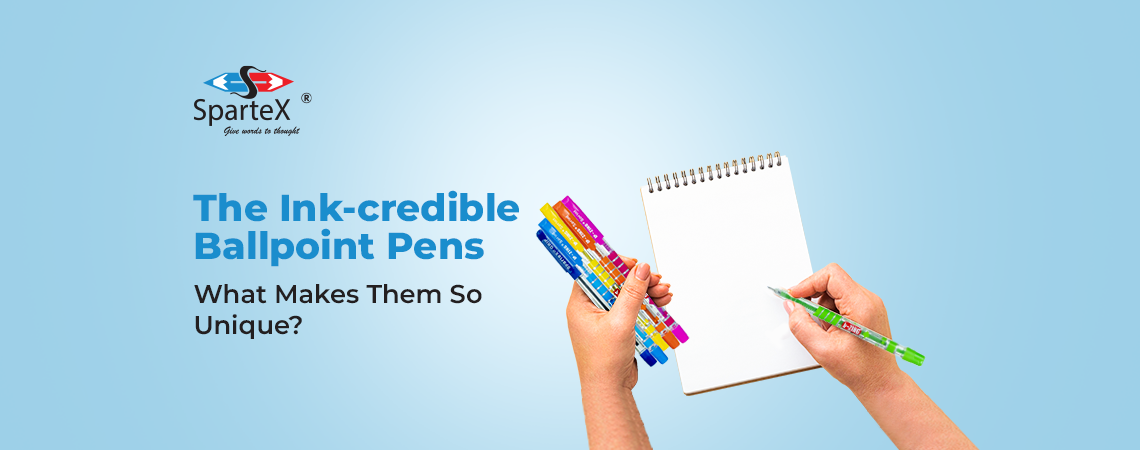Introduction
The seemingly simple ballpoint pens we use daily may appear to be basic writing instruments, but they are marvels of engineering. From writing exam papers to signing important documents, these pens are incredibly reliable and versatile, making them indispensable.
Read ahead to discover the technical aspects of a ballpoint pen design and what makes it a unique writing tool.
A Brief History of the Ballpoint Pen
The ballpoint pen originated in the late 19th century when John J. Loud patented a design that used a rotating ball to dispense ink. However, early prototypes encountered issues with ink flow and reliability. In the 1930s, László Bíró, a Hungarian journalist, developed the first practical ballpoint pen. The Biro pen was first introduced in Argentina in 1938 and gained popularity during World War II due to its durability and ability to write in extreme conditions.
After the war, ballpoint pens became commercially successful. The Reynolds Rocket, introduced in the United States in 1945, became a popular and affordable choice. Over time, advancements in ink technology and manufacturing processes improved the performance and reliability of ballpoint pens. Today, they are available in various styles, colors, and features to cater to diverse preferences and needs.
Read the detailed history about ball pen manufacturing in India.
Contact Us for Corporate enquiries
contact@spartexpen.comWhat makes the Ballpoint Pen so Unique?
Mechanical Aspects

Roller-ball Tip
The tip of a ballpoint pen contains a small, hard steel ball made of tungsten carbide or stainless steel. This ball rotates freely within a socket and is surrounded by a reservoir of thick ink drawn to the ball’s surface through capillary action. When the pen is pressed against paper, the ball rolls, spreading the ink evenly onto the surface.
Nib Design
The size and shape of the ballpoint pen nib determine the line width and writing experience. Fine-point nibs produce thin, precise lines suitable for detailed writing and drawing. Medium-point nibs create broader strokes ideal for general writing and note-taking. The choice of nib size depends on personal preference and the specific task.
Ergonomic Considerations
Many ballpoint pens feature a retractable design to enhance convenience and durability. This allows them to be easily carried in pockets or purses without the risk of accidental ink transfer. Additionally, ergonomic considerations such as contoured grips and lightweight materials can help reduce hand fatigue and improve writing comfort.
Ink-related Aspects

Formulation and Viscosity
The viscosity of ballpoint pen ink is essential for its optimal performance. It must be thick enough to prevent leakage and smudging yet thin enough to flow smoothly and dry quickly. Ink manufacturers carefully balance the viscosity of their formulations using various additives, such as surfactants and thickeners.
Smudge-Resistance
One of the main benefits of ballpoint pens is their quick-drying ink, which is achieved through fast-evaporating solvents and additives. The ink formulation can also be adjusted to reduce smudging, making ballpoint pens suitable for left-handed writers and fast-paced environments.
Water-proof Properties
Ballpoint pens with waterproof inks are an excellent choice for long-term durability and preservation tasks. These inks are designed to resist fading and smudging when in contact with moisture and are specially formulated to maintain their integrity over time. This makes them perfect for safeguarding essential documents such as legal records and historical artifacts.
Conclusion
Ballpoint pens, while seemingly simple, result from sophisticated engineering and careful material selection. Their unique features, such as quick-drying inks, smudge resistance, and various nib sizes, have made them indispensable daily. As technology advances, we expect to see further innovations in ballpoint pen design that will enhance their performance and writing experience.
Contact Us for Corporate enquiries
contact@spartexpen.com
